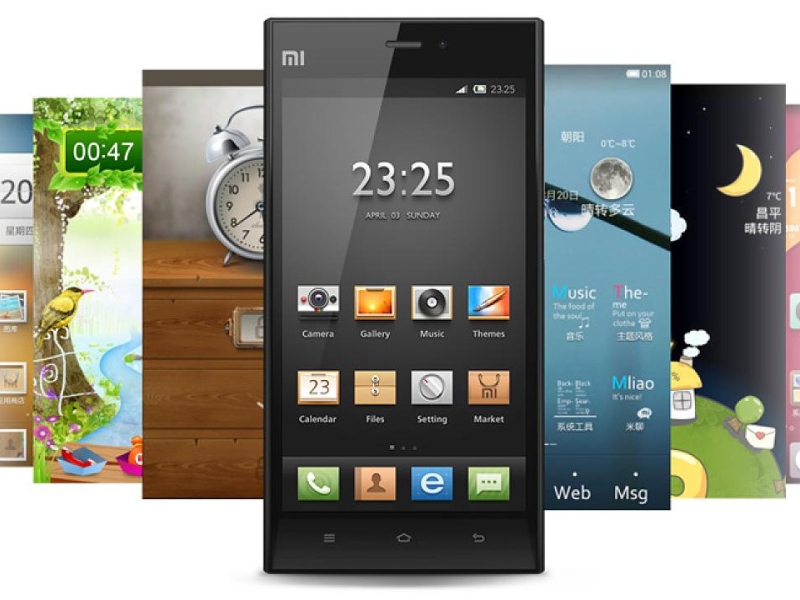- Home
- Mobiles
- Mobiles Opinion
- Why a Custom SoC May Not Be Worth the Trouble for Xiaomi
Why a Custom SoC May Not Be Worth the Trouble for Xiaomi

There have been rumours recently that Xiaomi plans to manufacture its own smartphone system on a chip (SoC). The SoC is the heart of a smartphone and can make or break a device - just ask someone who has used a phone running on Qualcomm's Snapdragon 810, and faced excessive heating and poor performance.
Qualcomm and MediaTek are the leading SoC suppliers whose microprocessors form the backbone of smartphones across brands; others such as Intel, Spreadtrum, and many more have a minute market share in comparison.
Most SoC manufacturers such as MediaTek simply use stock Cortex cores provided by ARM. Others license the base architecture and build custom cores, aimed at specific use cases. Qualcomm licensed ARM's v7 architecture to create the custom Krait cores for its Snapdragon SoCs, and is now doing the same with ARM's v8 architecture for Kryo starting with the Snapdragon 820. Apple licensed ARM's v8 architecture and has created Cyclone, Typhoon, and Twister custom cores for its A7, A8, and A9 SoCs, which have formed the backbone of successive iPhone and iPad models.
Developing these custom cores requires a lot of effort and resources. It often costs companies hundreds of millions of dollars, but this can be necessary to gain a competitive advantage. Developing these custom cores enables companies to drive better performance and reduce power consumption. This has certainly been true for Apple whose in-house A7, A8, and A9 chips were all at the top of benchmark charts when they were launched.
If Xiaomi actually enters the SoC market, it could also go the route of using ARM's Cortex cores, but in that case, why spend money on developing an in-house SoC, instead of using MediaTek's SoC? Samsung and Huawei do currently manufacture SoCs based on ARM Cortex cores, but in terms of processing power per core basis, they lose to Apple and Qualcomm. This isn't a big problem for Samsung and Huawei, which are well established brands with huge distribution and marketing networks, who don't rely entirely on specs to sell their phones anymore.
Xiaomi's public perception on the other hand puts a lot of focus on specs, and high end performance at low prices. Should Xiaomi go the route of ARM Cortex cores, its SoC would just be another option on the market, and probably not something that would be lauded for its performance. All of this adds up to suggest that Xiaomi is going to have to go with a custom core - if it enters the SoC business.
What can Xiaomi gain from a custom SoC?
Building your own SoC can bring many benefits to a smartphone manufacturer. The company can tweak the SoC to the specific needs of its own devices - the best example of this is probably Apple. Every iPhone since the iPhone 4S has a dual core processors that provides decent performance while keeping power consumption under check. When it comes to tablets, Apple uses a better performance variant of its smartphone SoCs. This does lead to higher power consumption, but the iPad's battery is big enough that this isn't a problem. Apple Watch on the other hand sips less battery by offering much lower performance. In this way, custom SoCs give manufacturers the ability to tailor the chip to different devices and different needs.
Third-party SoCs are generally made in such a way that they fit all devices well, but that doesn't allow you to bring the best out of the device. Apart from bringing out the best from a device, a custom SoC can also be a competitive moat. For example, when Qualcomm's Snapdragon 810 was released, it drew criticism for overheating a lot. Companies such as LG, Sony, and HTC, which had no in-house SoC, had no choice but to use the Qualcomm Snapdragon 810 with reduced clock speeds and other optimisations, but Samsung and Apple were able to use their in-house SoCs instead, giving them the advantage for that generation of devices.
On the other hand, Qualcomm's competitive edge for example has been its ability to integrate the modem into the SoC. Qualcomm holds a ton of CDMA patents. The US is by far one of the biggest market to still use CDMA and EVDO. US is the third largest telecommunications market and Verizon and Sprint both have around 50 percent of the US cellular market and both operate CDMA and EVDO networks. Apart from this certain carriers like Verizon are actively trying to implement LTE-U which again only Qualcomm is actively participating in. This has allowed Qualcomm to have a monopoly of sorts in the North American market.
Different custom SoCs have brought different value-adds into the picture, and Xiaomi will have to think of what it can do to make a custom SoC worth the investment, if it is to follow this route. Apple, for example, was able to customise the SoC to have a secure enclave to store TouchID data. Nvidia's speciality is in GPU design, while MediaTek has been delivering decent performance at low prices.
MediaTek and other Chinese SoC manufacturers are great at cost cutting; they provide decent performance at prices lower than what Qualcomm would ask. These feed the bottom end of the smartphone market.
If Xiaomi builds its own SoC, it could stand to build a competitive moat of its own, with its own areas of specialisation, and start building chips that are deeply customised to its devices. But there are some challenges along the way as well.
Is it worth the money for Xiaomi to follow this path?
Neither Apple nor Qualcomm own any foundries - multi-billion dollar factories where SoCs are churned out. Space in these foundries is limited and currently Samsung and TSMC are the major players in this industry. These foundries bring out process nodes on which SoC's are manufactured - a pretty complex subject, but suffice it to say that this refers to the size of the chip on which the SoC is built. The smaller the node, the better, and that's why a SoC on a 14nm node could give performance gains over the same design a 20nm node.
Since Samsung owns foundries and the Exynos SoC is also made by Samsung, it often gets manufactured using the latest process nodes. This was very evident with Exynos 7420 (made on a 14nm process) that showed considerably better performance than the Qualcomm snapdragon 810 (made on a 20nm process).
Should Xiaomi make its own chips, it would have to compete with Apple, Samsung, Qualcomm, and tons of others for foundry space. That's going to be expensive, even leaving aside the R&D cost of design, and that raises the question of how the company can recover any investment on a SoC.
The different chip makers all have their own way of making money. Apple's investment in chips is recouped from the hardware it sells. Samsung already owns its foundry and manufactures millions of devices apart from phones, all of which can be powered through in-house processors.
Qualcomm has two businesses, one is to manufacture application processors and the other is licensing; interestingly, while manufacturing accounts for nearly 70 percent of its revenue, licensing accounts for nearly 70 percent of the profits.
If Xiaomi does end up making SoCs, the business model will likely be similar to that of Samsung; using in-house chips in a wide variety of devices including smartphones, tablets, TVs, and more.But of late, doubts have started to emerge about Xiaomi's business model. That's because there is a big difference between Samsung and Xiaomi.
Samsung's products are sold with significantly higher margins, with prices ranging from the entry-level to the very top-end flagships like the Samsung Galaxy S7 Edge and the Note series. At the same time, Xiaomi's software and services business isn't a huge revenue generator either. Xiaomi's wafer thin margins raise the question of whether an in-house SoC will really generate meaningful returns.
(Also see: Xiaomi - From China's Apple to China's Samsung?)
Its core sales come from selling smartphones, and 90 percent of Xiaomi's smartphone sales occur in China. Both the global and Chinese smartphone market are facing stagnation and other areas where Xiaomi is present - such as TVs, tablets, and so on, are areas where it isn't even in the top five, and so it doesn't have the scale to justify an in-house SoC for these products.
As mentioned above the, benefits of having a custom SoC can be significant; in fact in this age of commoditised smartphone hardware, SoC is something that can still make a smartphone stand out in the crowd. But, as mentioned, the challenges of a custom SoC are enormous as well, and for a company like Xiaomi that's facing a lot of business uncertainties, the custom SoC route might actually be about more trouble than it's worth.
Catch the latest from the Consumer Electronics Show on Gadgets 360, at our CES 2026 hub.
Related Stories
- Samsung Galaxy Unpacked 2025
- ChatGPT
- Redmi Note 14 Pro+
- iPhone 16
- Apple Vision Pro
- Oneplus 12
- OnePlus Nord CE 3 Lite 5G
- iPhone 13
- Xiaomi 14 Pro
- Oppo Find N3
- Tecno Spark Go (2023)
- Realme V30
- Best Phones Under 25000
- Samsung Galaxy S24 Series
- Cryptocurrency
- iQoo 12
- Samsung Galaxy S24 Ultra
- Giottus
- Samsung Galaxy Z Flip 5
- Apple 'Scary Fast'
- Housefull 5
- GoPro Hero 12 Black Review
- Invincible Season 2
- JioGlass
- HD Ready TV
- Laptop Under 50000
- Smartwatch Under 10000
- Latest Mobile Phones
- Compare Phones
- Samsung Galaxy A07 5G
- Vivo Y500i
- OnePlus Turbo 6V
- OnePlus Turbo 6
- Itel Zeno 20 Max
- OPPO Reno 15 Pro Mini 5G
- Poco M8 Pro 5G
- Motorola Signature
- Lenovo Yoga Slim 7x (2025)
- Lenovo Yoga Slim 7a
- Realme Pad 3
- OPPO Pad Air 5
- NoiseFit Pro 6R
- Xiaomi Watch 5
- Acerpure Nitro Z Series 100-inch QLED TV
- Samsung 43 Inch LED Ultra HD (4K) Smart TV (UA43UE81AFULXL)
- Asus ROG Ally
- Nintendo Switch Lite
- Haier 1.6 Ton 5 Star Inverter Split AC (HSU19G-MZAID5BN-INV)
- Haier 1.6 Ton 5 Star Inverter Split AC (HSU19G-MZAIM5BN-INV)

















